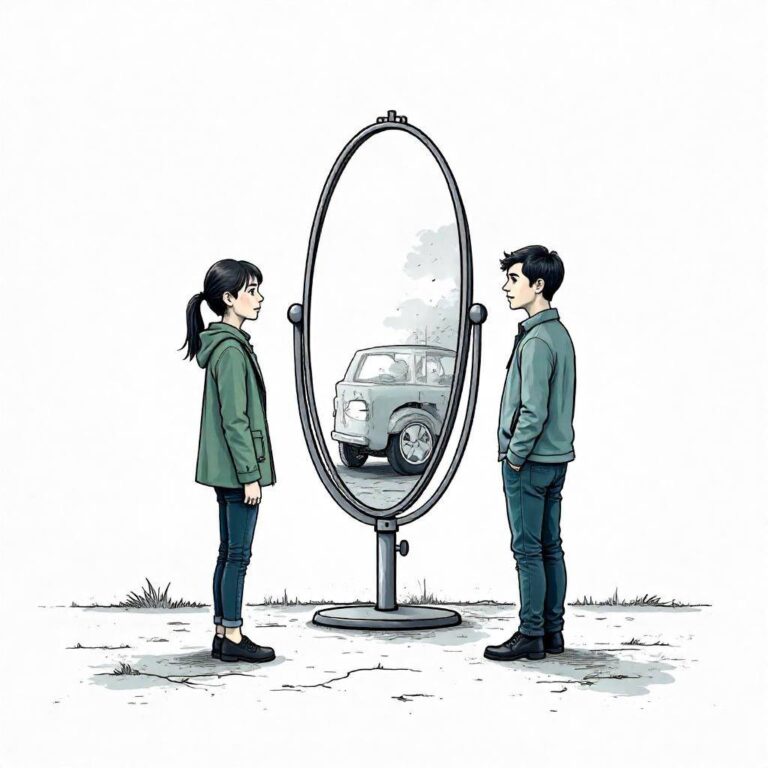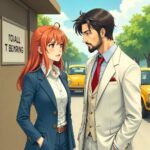Question from a reader:
Please tell me about the liability ratio in accidents where a curve mirror is obscured by trees or other objects. When driving through residential areas, there are times when curve mirrors become difficult to see due to overgrown vegetation from nearby houses. For example, if an accident occurs at an intersection with a curve mirror installed, but
a tree obstructs it, and one of the parties involved claims that the tree was the cause, would there be any penalties or changes in the liability ratio for the resident managing the tree? I asked this out of curiosity, but I believe that accidents can occur due to the inability to see curve mirrors, so I think there should be some measures in place to address this issue.
Curve Mirrors and Liability Ratios: Legal Perspectives Behind Accidents
Hello, today I want to think about a rather interesting topic. It’s about accidents that occur when curve mirrors are difficult to see. When driving in residential areas, obstructive vegetation can sometimes lead to accidents. In such situations, let’s consider who bears what level of responsibility from a legal perspective.
The Role of Curve Mirrors and Legal Background
First, let’s clarify what a curve mirror is and its role. Curve mirrors are important installations designed to help drivers safely navigate areas with poor visibility. They are often installed based on traffic regulations and serve as a crucial source of visual information for drivers. Legally, curve mirrors are installed to ensure public safety, which entails certain responsibilities regarding their management and placement. Therefore, the installer (often a local government or manager) has the responsibility to place them in appropriate locations and ensure clear visibility. In other words, if the curve mirror does not function properly, the likelihood of an accident increases.
What is the Liability Ratio in Accidents?
When an accident occurs, determining the liability ratio is very important. The liability ratio indicates the degree of responsibility of each party involved in the accident, primarily focusing on how much their actions contributed to the occurrence of the accident. The question here is how the presence of trees or obstacles that obscure the curve mirror affects the liability ratio. For instance, even if there is a curve mirror at an intersection with poor visibility, if that mirror is blocked by trees, the driver may not receive adequate information, increasing the likelihood of an accident. In such a situation, if one of the parties involved claims, “The tree was in the way,” the resident managing that tree may be held liable.
Let’s Consider a Specific Example
Imagine a scenario where there is a curve mirror installed at an intersection in a residential area, but a large tree is growing in front of it. Driver A approaches that intersection but cannot see the mirror and, unable to confirm the presence of vehicles passing through the intersection, an accident occurs. In this case, did Driver A fulfill their duty of care, or did the tree obstruct their view, leading to the accident? In such situations, the liability ratio becomes complex. Driver A has a duty to pay sufficient attention, but at the same time, the installer of the curve mirror and the resident managing the surrounding area also bear responsibility.
Resident’s Responsibility and Impact on Liability Ratios
So, what kind of penalties would be imposed on the resident managing the tree? In fact, if there are obstacles that obstruct the view of a curve mirror, the manager of that mirror may also be held to a certain degree of responsibility. The possibility of liability under Article 709 of the Japanese Civil Code regarding torts may apply. Specifically, if a resident causes damage to others through their property (in this case, the tree), that resident may be held liable for damages. However, if the resident has managed the tree properly or did not contribute to the occurrence of the accident, they may not be held liable. Thus, the determination of liability ratios is case-by-case and heavily depends on the circumstances and environment of the accident. This is why it is crucial to consult professional legal experts or traffic accident specialists when a specific accident occurs.
Measures to Prevent Accidents
Finally, I want to consider measures to prevent accidents before they happen. Situations where curve mirrors are difficult to see are not only dangerous for drivers but also affect the residents living nearby. Therefore, it is important for local residents and municipalities to collaborate on managing vegetation and reassessing the positioning of curve mirrors. For example, conducting regular inspections and trimming vegetation as needed can help prevent accidents. Considering the safety of the entire community, such activities are very meaningful.
Conclusion
When thinking about accidents where curve mirrors are obscured by trees, it becomes clear that there are very complex legal aspects involved. The liability ratio changes depending on the circumstances of the accident, making it difficult to determine who bears what level of responsibility. Nonetheless, it is necessary for local residents and municipalities to work together to implement measures to prevent accidents. While it is essential to practice safe driving, I also feel that it is important to improve the surrounding environment. I hope that everyone can cooperate to create a safer community. Well then, let’s meet again next time with another interesting topic. Let’s aim for a world without accidents by practicing safe driving!



